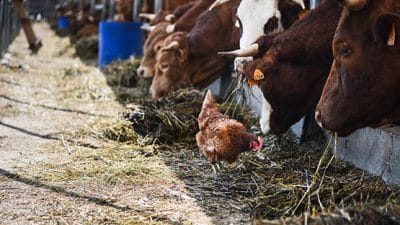
The Virginia Tourism Corporation released numbers today related to 2021 travel in the state. According to a news release, travelers to Virginia spent $69 million a day in 2021, up from $48 million in 2020.
Virginia’s tourism revenues reached $25.2 billion in 2021, marking an 87 percent recovery to pre-pandemic spending in 2019.
According to the report, 80 of Virginia’s 133 localities fully recovered to 2019 levels of spending.
“Tourism has seen an incredible comeback thanks to the hardworking leaders in the travel and tourism industry across Virginia,” said Rita McClenny, president and CEO of Virginia Tourism Corporation. “As travelers continue to visit communities across the state, Virginia is on pace to restore the tourism industry into the vibrant and highly performing economic engine it always has been. We look forward to an even stronger recovery in 2022.”
Shenandoah Valley: Spending and economic impact
The Shenandoah Valley had visitor spending in 2021 of $1.43 billion. Despite a major drop of more than 25 percent in spending in 2020, the region has rebounded with spending surpassing pre-pandemic levels. When comparing 2019 spending levels to 2021, the increase in spending was just over 7.3 percent.
Visitor spending by year and change from year to year was:
- 2016: $1.17 billion
- 2017: $1.21 billion (increase of 3.5 percent)
- 2018: $1.29 billion (increase of 6.5 percent)
- 2019: $1.34 billion (increase of 3.6 percent)
- 2020: $99.7 billion (decrease of 25.6 percent)
- 2021: $1.43 billion (increase of 44.2 percent)
In the Shenandoah Valley, direct visitor spending in 2021 was:
- $393 million in lodging; increase of 52.3 percent
- $442 million in food and beverage; increase of 43.1 percent
- $190 million in retail
- $173 million in recreation
- $240 million in transport; increase of $35.2 percent
Other highlights from the Shenandoah Valley include:
- 44.2 percent increase in visitor spending from 2020 to 2021
- 5.5 percent share of all area jobs sustained by tourism
- Visitors generated $104 million in state and local taxes
The Shenandoah Valley is comprised of Augusta, Clarke, Frederick, Page, Rockbridge, Rockingham, Shenandoah and Warren counties and the cities of Buena Vista, Harrisonburg, Lexington, Staunton, Waynesboro and Winchester.
Virginia tourism’s recovery
The Commonwealth has recovered significantly from the pandemic, but the recovery has been uneven across geography and travel sectors.
While the initial onset of the pandemic had a devastating impact on the travel industry in 2020, domestic leisure travel saw a robust return in 2021 as travelers sought outdoor experiences and drivable destinations.
Virginia is uniquely positioned geographically and is within a day’s drive from nearly half of the U.S. population. As road trips boomed, many Virginia regions were able to reap the benefits of increased travel.
While Northern Virginia was slow to pick up momentum in 2021 due to severely depressed business and international travel, according to the release, there has been a material shift in recovery of hotel performance in the region and it is moving in a strong direction to full recovery.
With solid performance across the Commonwealth, it is expected that spending will fully reach 2019 levels in 2022.
Key industry performance
Virginia’s tourism and travel industry is comprised of a variety of sectors which contribute to its economic vitality, employment and tax revenue.
Among key travel industries impacted, Virginia’s food and beverage industry has the largest share of tourism dollars, accounting for $7.2 billion or 29 percent of spending. In 2021, food and beverage spending recovered to 92 percent of 2019 levels.
Other key performance indicators across the industry include:
- Transportation (28 percent of visitor spending): Although transportation spending increased by 52 percent in 2021, with the slow return of air travel, the transportation share of spending has only recovered to 78 percent of 2019 levels.
- Lodging (19 percent of visitor spending): Lodging spending grew by 48 percent in 2021, reaching 87 percent of 2019 levels.
- Recreation (13 percent of visitor spending): Recreation grew by 46 percent in 2021, returning to 94 percent of 2019 levels and represents the industry closest to full recovery.
- Retail (12 percent of visitor spending): Retail has returned to 90 percent of 2019 levels.
Looking ahead: 2022 and beyond
With the additional marketing dollars that came through the American Rescue Plan Act funds, Virginia and its localities should continue to see growth in visitor spending.
Virginia Tourism, specifically, utilized recovery grant funds to advertise in new markets and reached nearly 15 million more households in 2022 relative to 2021. By reaching more travelers, Virginia continues to raise awareness and consideration as a premier travel destination, resulting in increased bookings and arrivals, which translates to increased visitor spending across the state.
Virginia Tourism partnered with Tourism Economics for its 2021 Annual Economic Impact study.
Learn more at virginia.org.










